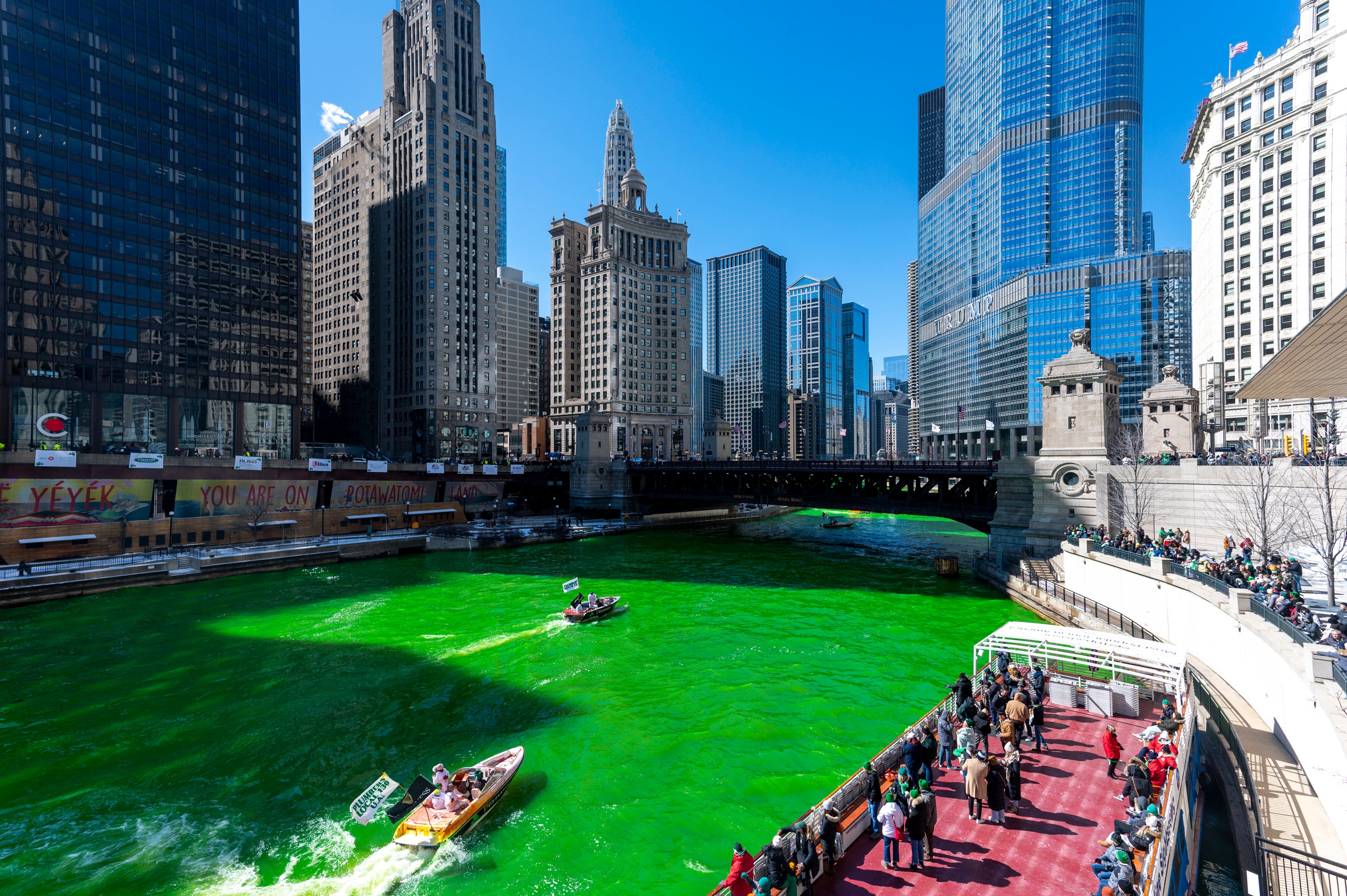Chicago dyeing its river green for St Patrick’s Day isn’t the environmental disaster you’d imagine
The tradition has been carried out since the early 1960s
The Chicago River was dyed a vibrant kelly green this past weekend ahead of St Patrick’s Day on 17 March.
The Windy City is known for its huge St Patrick’s Day festivities, which returned in full force after a two-year hiatus.
The decades-old tradition of dyeing the river was watched by thousands of people who flooded into downtown Chicago on Saturday despite bitterly cold temperatures and snow. The Chicago Plumbers Union Local 130 carry out the custom which has made the city’s St Patrick’s Day celebrations world-famous.
The idea was originally cooked up by former Chicago Mayor Richard Daley and union manager Stephen M Baily. The mayor originally proposed turning Lake Michigan green but the plan, for a 22,400 square mile body of water, was deemed too difficult.
The dye was originally used by plumbers to test for leaky pipes in buildings. In the early years, around 100 pounds of fluorescein was used, according to Irish Central, leaving the Chicago River green for about a week.
Environmentalists were quick to point out the risks of fluorescein, an oil-based fluorescent dye used by scientists to visualize flow.
In 1966, the plumbers started using the current powder, originally orange in color until it mixes with water. It is understood to be an eco-friendly mix made from vegetables – although the exact recipe remains a closely held secret.

Several small boats release about 40-pounds of dye, dubbed “Leprechaun Dust”, which keeps the water green for up to 48 hours.
For the past half century, two Chicago families, the Rowans and the Butlers, have been responsible for carrying out the tradition.
In 2020, Chicago Mayor Lori Lightfoot was forced to abruptly cancel the St Patrick’s Day parade after the World Health Organisation declared Covid-19 a pandemic and the severity of the threat began to grip America.
In a stealth move last year, Mayor Lightfoot allowed for the river to be dyed green at the last-minute.
The event was not publicized in advance “in order to minimize crowds and avoid congregating”, the mayor’s spokesperson said at the time.
Who dyes the river and what do they use?
Is it bad for the environment?


Join our commenting forum
Join thought-provoking conversations, follow other Independent readers and see their replies
2Comments